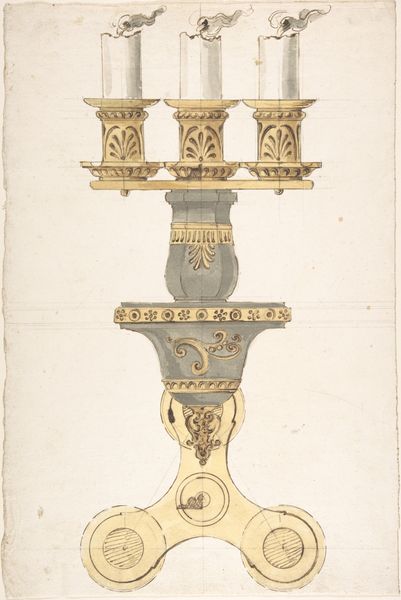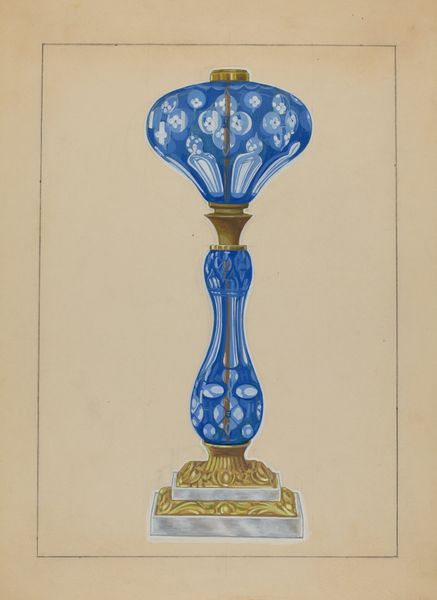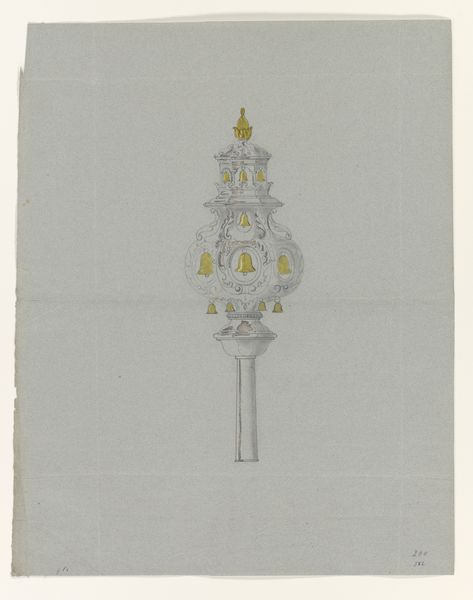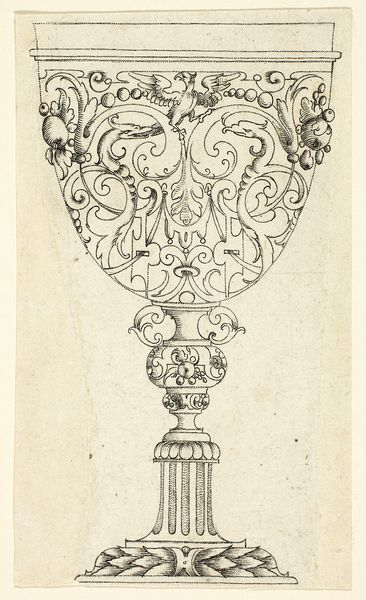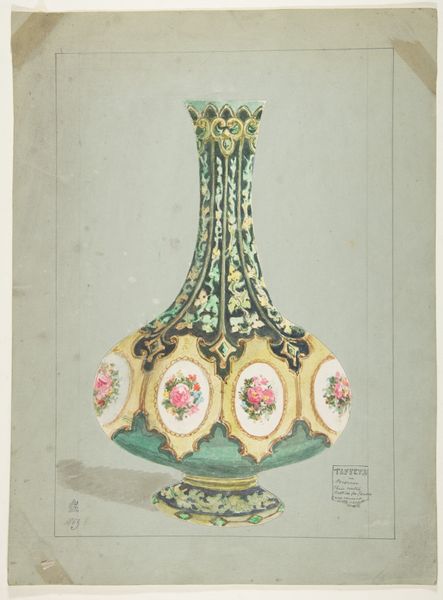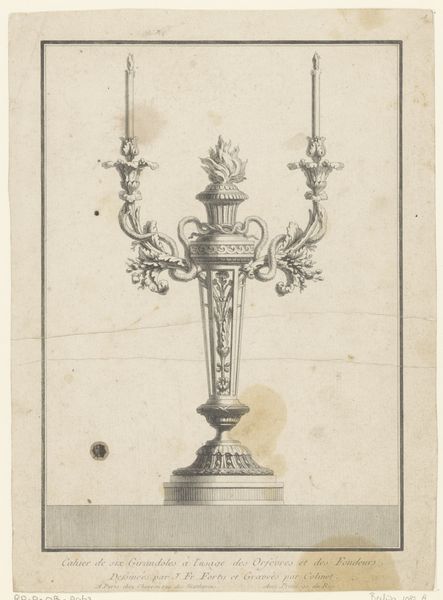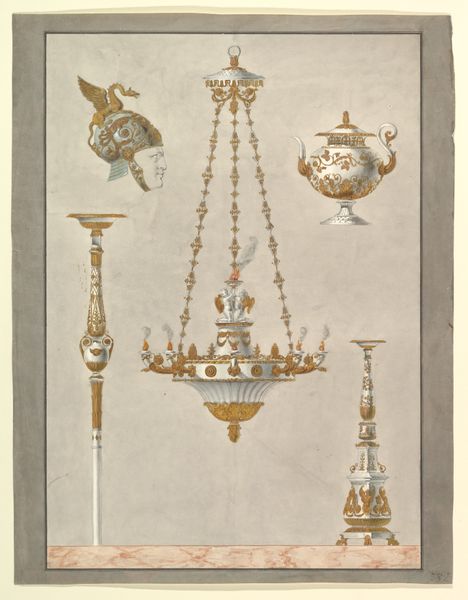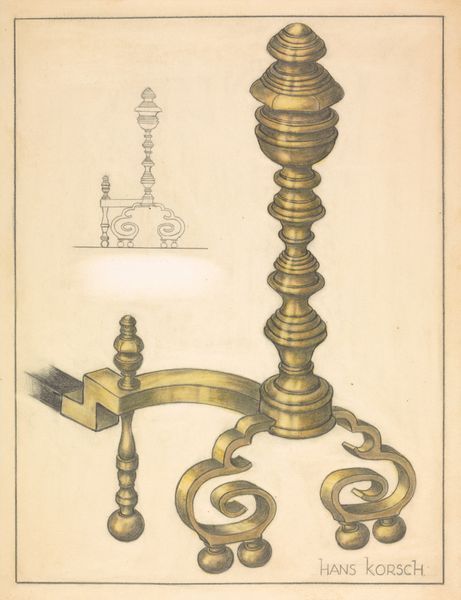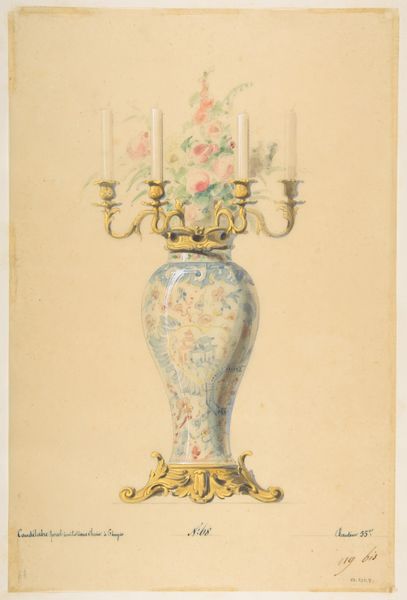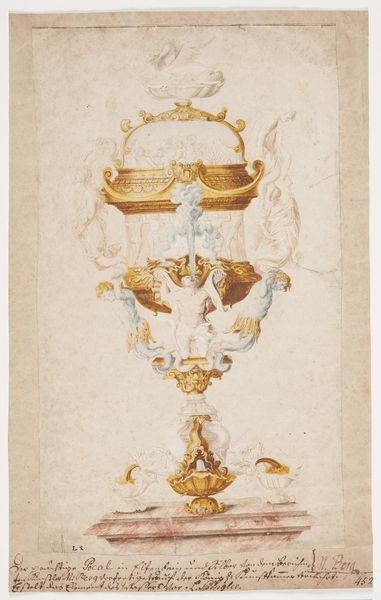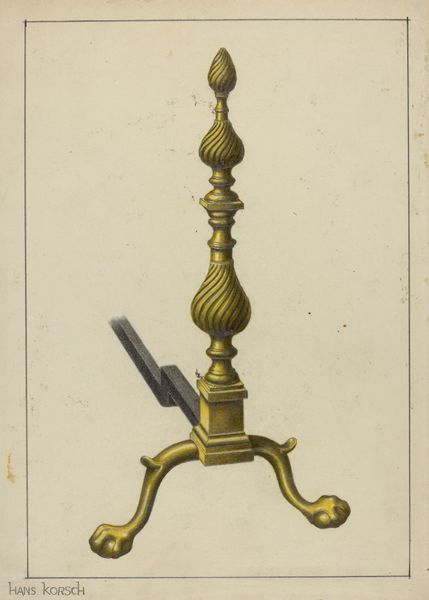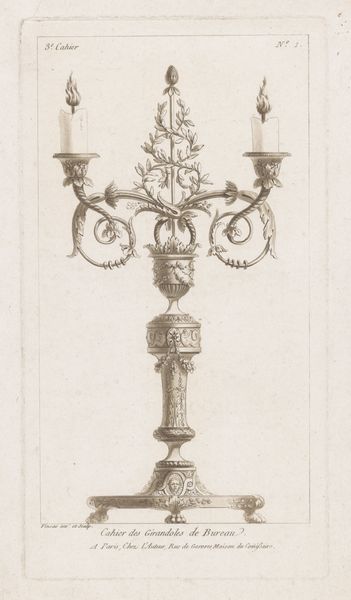
Een kandelaber van verguld en gepatineerd brons, met Egyptische motieven en paardenhoofden c. 1810 - 1815
0:00
0:00
juliusschnorrvoncarolsfeld
Rijksmuseum
drawing, watercolor
#
drawing
#
neoclacissism
#
ancient-egyptian-art
#
watercolor
#
watercolour illustration
#
history-painting
#
decorative-art
#
watercolor
Dimensions: height 751 mm, width 347 mm
Copyright: Rijks Museum: Open Domain
This candelabra design, by Julius Schnorr von Carolsfeld, features both gilded and patinated bronze, materials prized for their durability and visual richness. Bronze is an alloy of copper and tin, and the processes involved in its creation – mining, smelting, alloying, casting, and finishing – speak to a complex network of labor and trade. Gilding, the application of thin gold leaf, adds a layer of luxury, while the patination process, likely involving chemical treatments, gives depth to the bronze surface. The very concept of patination, which simulates the effects of age, implies a self-conscious awareness of history. The candelabra’s motifs, including Egyptian figures and horse heads, show how design freely borrows from other cultures. This was a period of intense consumption and circulation of design ideas, and such a piece would have demonstrated the owner’s affluence, education, and taste. Considering the materials, making, and context of this candelabra design helps us understand its full meaning, challenging distinctions between fine art and craft.
Comments
No comments
Be the first to comment and join the conversation on the ultimate creative platform.
